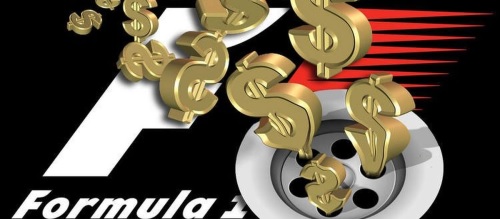Similar articles
Behind the Speed: The Financial Engine of Formula 1 Racing

The exhilarating world of Formula 1 (F1) captivates millions with its combination of speed, strategy, and spectacle. But beneath the roar of the engines lies a complex financial ecosystem. Let’s take a look at the economic gears that drive this billion-dollar sport.
Formula 1: More Than Just Racing
It’s easy to be mesmerised by the overtaking manoeuvres and high-speed chases. However, F1 is as much a business empire as it is a sporting event. The intricate financial strategies employed by teams and stakeholders rival the on-track tactics of the drivers.
Monetising the Pedal to the Metal
Formula 1, over the decades, has established multiple revenue streams, ensuring the sport’s financial vitality and appeal to investors.
1. Sponsorships & Brand Partnerships
From the logos adorning the race cars to the banners along the racetracks, sponsorship deals are a major cash influx. Brands pay top dollar for visibility in this high-profile sport, associating their name with speed, precision, and luxury.
2. Broadcasting Rights
Global broadcasters compete fiercely for the rights to televise F1 races. The exclusivity of showing live races, especially in key markets, can fetch astronomical figures, making TV rights one of the sport’s primary revenue generators.
3. Race Hosting Fees
Cities and countries vying to host F1 races pay hosting fees. These events not only boost local tourism but also position the location as a global hotspot, justifying the hefty sums paid to the F1 management.
Diversifying the Financial Portfolio
While traditional revenue streams continue to be pivotal, F1 teams and management are always on the lookout for innovative ways to increase their financial inflow.
4. Merchandising & Licensing
F1-branded merchandise, from apparel to video games, offers fans a piece of the racing world. Licensing deals with manufacturers and game developers further amplify the sport’s reach and revenue.
5. Digital Platforms & Streaming
Embracing the digital age, F1 has ventured into online streaming with platforms like F1 TV Pro. These subscription-based services cater to the tech-savvy audience, offering exclusive content and behind-the-scenes action.
6. Fan Festivals & Experiences
Beyond the race track, events like F1 Fan Festivals immerse enthusiasts in unique experiences. These events, often combined with concerts and shows, open up additional avenues for income.
F1 Teams: Racing to the Bank

Success on the racetrack often translates to financial success. Podium finishes, championship points, and fan engagement play a crucial role in determining a team’s economic prosperity.
7. Prize Money Distribution
Based on the Constructors’ Championship standings, teams receive a share of the F1 prize fund. The higher they rank, the larger the slice of the financial pie they take home.
8. Individual Team Sponsorships
Top teams like Ferrari or Mercedes attract individual sponsorships, with brands eager to be associated with these iconic names. These deals can sometimes even surpass the team’s earnings from race wins.
Understanding the economics of F1 provides a fascinating insight into the intricate balance between sport and business. With billion-dollar deals, global engagements, and a relentless pursuit of innovation, Formula 1 races ahead, both on and off the track.



